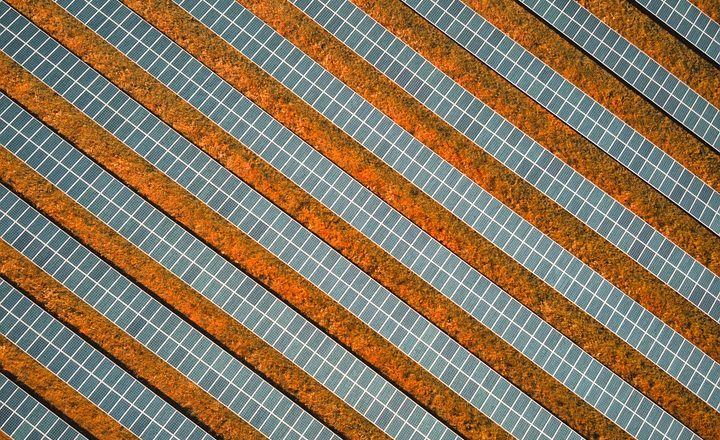
Spot on
Israel, Jordan and UAE come closer on a new Water-Renewable deal brokered by the US. What does it mean for the EU?

Abstract
The United Arab Emirates-brokered energy and water agreement between Israel and Jordan could pave the way for greater European Union (EU) involvement and support for regional integration on climate and water issues in the Middle East. The mediation of the United States (US) in the regional agreement was clearly critical, showing how important the involvement of the international community is to advance similar partnerships between actors who would otherwise be unable to cooperate. The EU should seize the opportunity of this regional opening for closer cooperation with the US on common objectives, such as the externalisation of the Green Deal and to revamp the Middle East Peace Process. This means, among other things, revising its Southern Neighbourhood policy in a way that takes into account the complexity of the MENA sub-regions and its new political and geostrategic reconfiguration following the wave of normalisation with Israel that has been sweeping the Middle East for more than a year.
______
The largest regional cooperation project between Israel, Jordan and the United Arab Emirates (UAE) was announced on 17 November in the local press.[1] The agreement, brokered by United States (US) climate envoy John Kerry, and expected to be signed on Monday in Dubai, would call for the construction of a UAE-funded solar farm in Jordan to provide renewable energy to Israel and a desalination plant in Israel to bring water to Jordan.[2]
Once materialised, EcoPeace Middle East, a unique organisation that brings together Jordanian, Palestinian and Israeli environmentalists, would finally see the realisation of their idea, translated into Green-Blue deal for the Middle East, that envisions a regional water-energy nexus between Jordan and Israel to address the climate crisis in the Middle East and contribute to peace building.[3]
The US’ intervention in pushing the implementation of this agreement can be seen as a missed opportunity for the European Union (EU) to play a leading role in contributing to the Middle East Peace Process and in advancing its Green Deal agenda beyond Europe’s borders in the region.
The EU has certainly started to seize the opportunity offered by the European Green Deal’s external action to promote regional cooperation in the Middle East. Indeed, through a series of workshops on climate change, energy transition, desertification and water desalination, one of which took place on November 16th at the Peres Center for Peace and Innovation, the EU has brought Israel and its neighbours together to discuss and possibly share solutions to common challenges posed by climate change. However, the US was faster (than the EU) in understanding that there was enough political goodwill among the involved parties to move the regional cooperation deal ahead and did not hesitate in advancing its negotiation. The cooperation agreement is in fact expected to have significant strategic advantages not only for the regional actors but also for the US. The deal will not only enable moving towards climate goals but will also contribute to stabilising the region. The construction of a water desalination plant in Israel to supply water to Jordan will mitigate the Kingdom’s water crisis, exacerbated by climate change, population growth, intensified water use and increased competition for water across borders. Addressing water scarcity in Jordan is a strategic objective for Israel since Jordanian water shortages posed an increasing threat to national security and stability in its immediate vicinity. Stabilising the Middle East region is clearly also a strategic interest for the US, which is primarily engaged on the Indo-Pacific front in their rivalry with China and for the EU, still in search of a new approach to address the Arab-Israeli Conflict.
While the Abraham Accords framework provided the leverage for the UAE’s involvement in the regional deal between Israel and Jordan, COP26 World Climate Conference eventually accelerated its negotiation, because of the clear environmental implications of the proposed plan. Purchasing solar power from Jordan, where the availability of renewable energy is greater and land and labour costs are lower, may indeed be the most cost-effective way for Israel to meet its Nationally Determined Contribution (NDC), at least as far as renewable energy is concerned. In fact, Israel has set its share of renewable energy generation at 30% by 2030, a goal that still seems very ambitious, considering that in 2020 it accounted for only 6.1%. Israel has a limited area available for large-scale energy installation.[4] Furthermore, the Glasgow Climate Pact asks the governments to speed up the pace of their climate actions and to revisit and strengthen their 2030 climate ambitions, and urges them to meet again by the end of 2022, rather than every five years as previously required. Finally, the Paris Rulebook, the guidelines for how the Paris Agreement is delivered, which was also completed during COP26, increases the transparency process which will hold countries to account as they deliver on their targets. The supply of solar energy from Jordan is therefore a way for Israel to meet its climate target on time and fuel its credibility in the international arena.
US mediation in the water-energy agreement that Israel, Jordan and the UAE will sign next week was clearly critical. It is becoming apparent that without the involvement of the international community, similar regional partnerships in the Middle East would be unlikely to materialise. This initiative could be a pilot triggering other similar initiatives between Southern Neighbourhood sub-regions on climate actions. This would pave the way for a greater EU involvement and support for regional integration on climate and water issues in the Middle East. In this regard, international institutions such as the European Investment Bank and the World Bank should play a more prominent role, complementing EU policy support with regional funding programmes on climate-related issues.
The EU should seize the opportunity of this regional opening for closer cooperation with the US on common objectives, such as the externalisation of the Green Deal and to revamp the Middle East Peace Process. This means, among other things, revising its Southern Neighbourhood policy in a way that takes into account the complexity of the MENA region and its new political and geostrategic reconfiguration following the wave of normalisation with Israel that has been sweeping the Middle East for more than a year.


